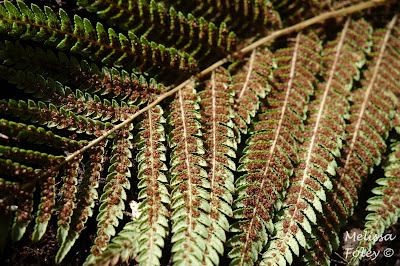Last weekend was labour day weekend for us in NZ so we headed south in the Wish called Wanda to explore around Waitomo. The area is known for its limestone/karst formations and extensive network of caves. Waitomo means holes (tomo) formed by water (wai) in Maori. The tomos are the holes that open from the cave to the air above. The tourist industry capitalized on the caves long ago, so there are only a few that are open to the public. The rest require a guide and entrance fee. We decided to take advantage of one of the unique offerings on hand...blackwater rafting. We donned wetsuits and helmets, grabbed an inner tube, and headed into the cave to float down the river.
We spent about two hours floating through Ruakuri (two dogs) cave. We got to jump off a couple of waterfalls, squeeze ourselves through some small spaces, and float silently (mostly) through cathedral-like caverns. In my opinion, the best part of the experience was the glow worms that shine like stars from the ceiling of the cave. The "worms" are actually the larvae of the fungus gnat. The larvae use bioluminescence, just like deep sea fish, to attract prey. When insects fly toward the light, they get stuck in sticky strands the glow worms produce. The worms grow for 6-9 months before metamorphosing into the winged insect. The gnat has no mouth so only lives for 48 hours...long enough to reproduce and lay eggs for the next round of glow worms.
After our rafting trip, we walked along the loop track around the Ruakuri Cave that includes a couple of tunnels and lots of neat rock formations.
New Zealand has a very high diversity of fern species - over 200 different kinds. They are incredibly diverse, and I find them fascinating. Here are a few to give you a sense of how different they can look.
On our drive back to Auckland along more narrow, windy roads, we had a couple of run-ins with the locals...
ready to go in the cave!
we couldn't take cameras inside the cave,
but this is where we exited the cave
but this is where we exited the cave
These are the sticky strands the glow worms make to catch bugs
After our rafting trip, we walked along the loop track around the Ruakuri Cave that includes a couple of tunnels and lots of neat rock formations.
layers of limestone
Pete loves tunnels
New Zealand has a very high diversity of fern species - over 200 different kinds. They are incredibly diverse, and I find them fascinating. Here are a few to give you a sense of how different they can look.
drooping filmy fern (I think)
hen and chicks fern
palm-leaf fern
The day after caving, we explored some of the other local geologic features nearby that we could easily access. The first stop was Mangapohue Natural Bridge. We walked through a canyon until we got to the bridge. The whole canyon used to be a cave before the roof caved in long ago. The natural bridge is all that is left of the cave roof.
swing bridge to the canyon wall
walkway through the natural bridge
the former cave roof
interesting formations on the ceiling
(they are not stalactites because they are formed differently)
(they are not stalactites because they are formed differently)
on the other side of the bridge, the loop took us
through farmland with more rock formations
through farmland with more rock formations
some with fossils of 25 million year old oysters
Our second stop was Piripiri cave. This is the only cave that can be accessed for free by the public. Stairs led down in to a big cavern with lots of interesting formations.
limestone formations - very coral reef like
stalactites galore!
Our third stop was Marokopa Falls, billed as one of the most lovely in NZ. Honestly, I don't know how they judge them...there are too many lovely ones to count! This was definitely worth the stop.
After our geologic tour, we continued down the narrow, winding two-land road to the coast and the village of Marokopa. We were definitely off the beaten path at this point, but the scenery was spectacular.
lunch spot in Marokopa
overlooking Marokopa
whitebait (very small fish) trap
From Marokopa, we traveled up and over the mountain to Kiritehere Beach, another black sand beauty.
Caspian Terns making some noise
black sand loveliness
mudstone rock formations on the beach
with distinct iron banding
the whole place was stunning!
Portuguese man o' war jelly on the beach
(the sting from these are supposed to be incredibly painful)
(the sting from these are supposed to be incredibly painful)
more fossils
some seriously happy cows
The final stop on our tour was the town of Kawhia, another small hamlet along the west coast. We didn't expect to find much there, but they had an art festival on so we saw some art, watched people carve stone and wood sculptures, and enjoyed our estuary-side camp site.
Maori totem
our camp site for the night
a lovely view across the mudflat
On our drive back to Auckland along more narrow, windy roads, we had a couple of run-ins with the locals...





























































